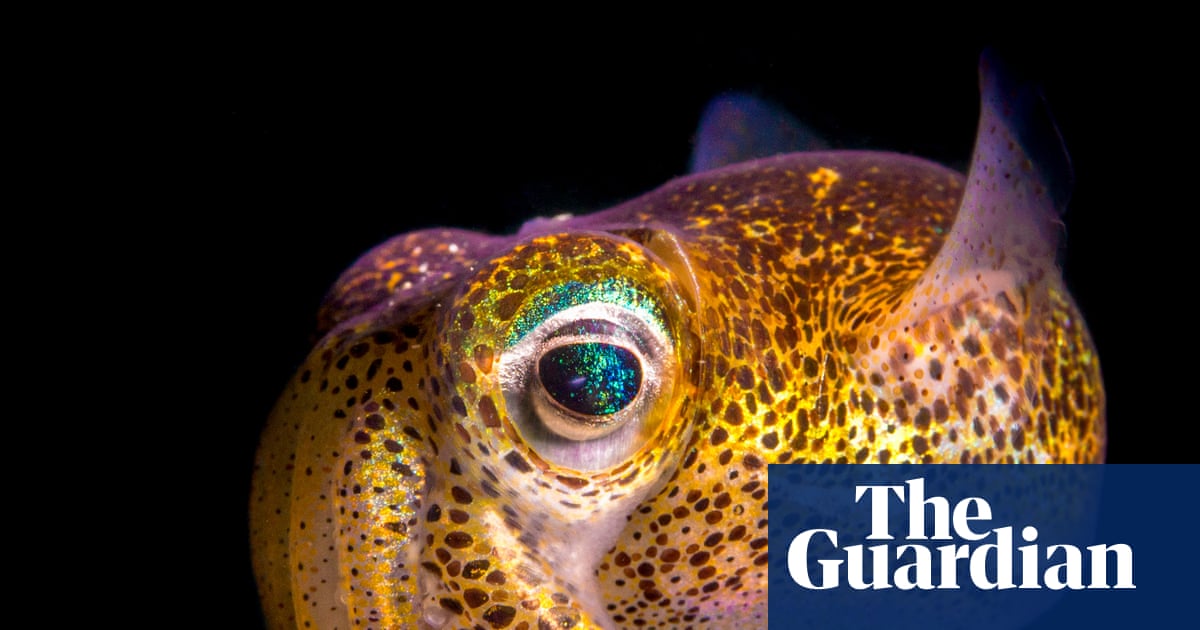
"Huddled together for warmth on a cold morning, these juvenile numbats (affectionately known as numbubs) survey their surroundings for any potential threats. With introduced species such as the feral cat and European red fox to contend with, their formative years are spent learning to blend in with their woodland surroundings, always alert to danger. Wiilman Country, Dryandra, Western Australia. Photograph: Lewis Burnett"
"I'm fascinated by interspecies interactions. I question: is it just social interaction or are these encounters driven by deeper connections, communication, or even cooperation? These two bottlenose dolphins were riding the humpback's wake then swimming to its eye and pausing. It was like a reunion of old friends in a fleeting moment. Nyangbul Country, Lennox Head, New South Wales. Photograph: Craig Parry"
"Feather-horned beetles are quite small, but their antennae are truly fantastic. A large group of beetles were flying around and this one perched on a stick, where I snapped their unique symmetrical portrait. I was with my father-in-law Fernando Leon, who is now battling ALS, a neurodegenerative disorder, so I would like to dedicate this photo to him. Gadubanud Country, Great Ocean Road, Victoria. Photograph: Damien Esquerre"
"Ghost bats are rare and elusive, with strict roost requirements. After years studying these nocturnal predators with thermal optics, I've discovered a handful of regularly frequented locations in the escarpment surrounding my home. This image was captured on 1 January 2025 an incredible way to usher in the new year. Wagiman Country, Adelaide River Hills, Northern Territory. Photograph: Etienne Littlefair"
Juvenile numbats huddle for warmth and learn to blend into woodland surroundings to avoid introduced predators such as feral cats and European red foxes. Bottlenose dolphins rode a humpback's wake, swam to its eye and paused in an apparent reunion. Feather-horned beetles, though small, have spectacular antennae; one perched beetle provided a unique symmetrical portrait and was dedicated to a relative battling ALS. Ghost bats are rare, nocturnal predators with strict roost requirements; thermal optics studies revealed a handful of regularly frequented escarpment roosts. Two galahs beneath an early morning streetlight stood out against the light, creating a striking urban wildlife moment.
#australian-wildlife #interspecies-interaction #conservation-threats #nocturnal-predators #nature-photography
Read at www.theguardian.com
Unable to calculate read time
Collection
[
|
...
]